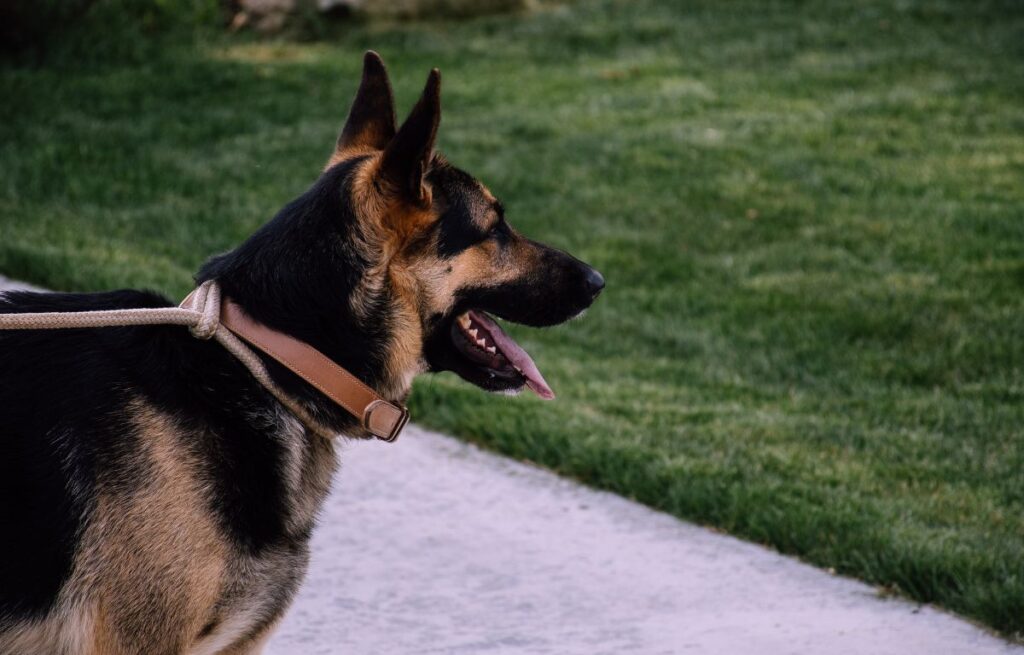German Shepherds are known for their intelligence, trainability, and eagerness to please, making them an ideal breed for training. However, as with any breed, training a German Shepherd requires patience, consistency, and a positive attitude. In this post, we will discuss some tips and tricks for training your German Shepherd that will help make the process more effective and enjoyable for both you and your dog.

German Shepherd Training Tips For Success
I. Start Early
- Training should start as early as possible, ideally when your German Shepherd is still a puppy. Puppies are more open to new experiences and are more likely to learn quickly. Starting training early also makes it easier to establish a strong bond with your dog, and can help prevent behavioral issues from developing later on.
II. Positive Reinforcement
- Positive reinforcement is a key component of effective training. This means rewarding your German Shepherd for good behavior, rather than punishing them for bad behavior. Positive reinforcement training methods include using treats, praise, and play as rewards for good behavior. This type of training helps to establish a positive relationship between you and your dog, and is more effective than punishment-based training methods.
III. Consistency is Key
- Consistency is crucial when it comes to training your German Shepherd. This means using the same commands, rewards, and consequences every time you train your dog. It’s important to be consistent in your training methods, as this will help your dog understand what is expected of them and will make training more effective.
IV. Keep Training Sessions Short
- Training sessions should be kept short, ideally no longer than 15-20 minutes at a time. German Shepherds have a short attention span, and longer training sessions can quickly become boring and ineffective. Short, frequent training sessions will help keep your dog engaged and motivated to learn.
V. Break Commands Down into Small Steps
- Breaking commands down into small, manageable steps will make it easier for your German Shepherd to understand what is expected of them. For example, instead of teaching your dog to “heel” all at once, start by teaching them to walk by your side on a leash, then gradually add more advanced commands such as “heel” and “sit” as they become more comfortable and confident.
VI. Practice, Practice, Practice
- Consistent practice is essential for your German Shepherd to master new commands and skills. It’s important to practice commands and skills regularly, both in structured training sessions and in everyday life. Incorporating training into your daily routine, such as practicing basic commands during walks or before mealtime, can help make training a natural part of your dog’s life.
VII. Use Real-Life Situations
- Using real-life situations during training can help make training more effective. For example, if you want to train your dog to “come” when called, practice this command in a variety of different environments, such as your backyard, a park, or at a friend’s house. This will help your dog understand that the command applies to any situation and will make it more likely that they will respond appropriately when called in real-life situations.
VIII. Provide Mental and Physical Stimulation
- German Shepherds are a high-energy breed and require regular mental and physical stimulation to keep them happy and healthy. Training can provide mental stimulation, but it’s also important to provide physical exercise, such as regular walks and runs, and interactive toys or puzzles to keep them engaged and challenged.
IX. Get Professional Help
- If you are having trouble training your German Shepherd, or if you want to take your dog’s training to the next level, consider getting professional help. A professional dog trainer can help you identify and correct any training issues, and can also provide advanced training options such as agility or search and rescue.
Conclusion
In conclusion, training a German Shepherd requires patience, consistency, and a positive attitude. Using positive reinforcement, consistent commands, and breaking commands down into small steps are key to successful training. Incorporating training into everyday life and providing mental and physical stimulation are also important for maintaining the well-being of the dog. If you are having trouble with training or want to take your dog’s training to the next level, consider getting professional help from a dog trainer.



